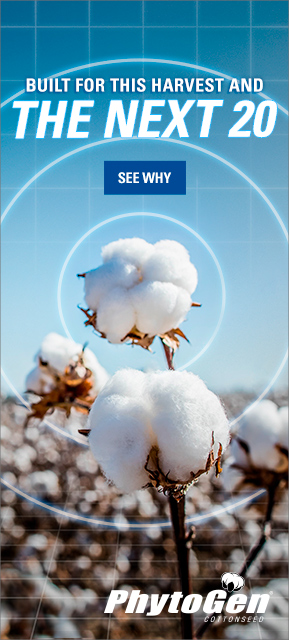
 Open Menu
Close Menu
Search
Open Menu
Close Menu
Search
-
About
- Leadership Photos of NCC advisors, officers and directors
- Member Benefits Strong industry member participation helps the National Cotton Council represent U.S. cotton on numerous issues and keep it competitive
- Member Web Sites Connect with the cotton community via websites of multiple NCC member firms
- Related Organizations Descriptions of and links to various organizations that serve the U.S. cotton industry
- Report to Members National Cotton Council action on behalf of the U.S. cotton industry is described in annual reports
- Structure The National Cotton Council is a federation that works out common problems and develops programs of mutual benefit for its members.
-
Economics
- Crop Info An abundance of information such as a profile of U.S. cotton’s economic contributions and updated U.S. cotton acreage, production and export numbers
- Government Programs Facts on the federal farm law including details on crop insurance and conservation programs
- Prices Key price data and marketing loan program values.
- Reports & Publications The National Cotton Council’s Weekly Cotton Market Report, its annual Economic Outlook and more
- Textiles Statistics on U.S. cotton textile imports and exports data and a textile trade policy summary
- Weather, Exchanges, & Contacts Links to weather websites and to exchange/market websites
-
Education
- Available Educational Resources National Cotton Council educational materials available for download offer useful teaching aids/guides to help students learn more about one of the world's major agricultural commodities
- Cotton: From Field to Fabric Describes the major steps involved in producing and processing cotton
- The Story of Cotton Tells the story of cotton -- where and how it's grown, processed and woven into cloth -- in simple terms
- U.S. Production Map This map shows the most recent U.S. cotton production by county
- Frequently Asked Questions Answers about the U.S. cotton industry and the National Cotton Council
-
Issues
- Find Your Congressional Contacts Contact information, including a list of staffers, of House and Senate Members in Cotton Belt states
- Government Web Sites Links to key USDA agencies and services and to other government websites
- Agri-Business Database of agribusiness firms who have a stake in a healthy U.S. cotton industry
- CAC Committee for the Advancement of Cotton
-
Technical
- Bale Packaging Bale packaging, specifications, standards, permanent identification
- Biotechnology Reports, studies, links to other resources
- Contamination-Free Cotton Round Module Wrap Standards, Prevention Video, Guidelines, Resources
- Cottonseed Products, research, general information
- Flow-Shipment Improvement initiatives, warehouse reporting, shipping standards
- Pest Management Boll weevils, nematodes, seedling diseases, cotton pest loss data
- Physiology Best management practices, Cotton Physiology Today newsletters archives, water use
- Pollinator Protection State-managed plans (MP3s)
- Quality Preservation Guidelines, Module Averaging, Bale Moisture
- Safety & Security OSHA, oil spill prevention, fire/building codes, hazardous material rules
- Sustainability U.S. Cotton's Sustainability
- Beltwide Cotton Conferences 2024 Beltwide Cotton Conferences January 3-5, 2024- Fort Worth, Texas
-
News & Events
- Audio & Video Broadcasters can download interviews with National Cotton Council leaders/staff, Congressional Members and government officials.
- Cotton's Calendar Dates and places of key meetings of the National Cotton Council, various NCC member firms and cotton interest organizations
- Cotton's Week Archives of the National Cotton Council's premier member newsletter
- Meetings Links to information from National Cotton Council annual meetings and other key NCC forums
- News Releases Current and archived National Cotton Council news releases
- Beltwide Cotton Conferences January 3-5, 2024 Omni Fort Worth, Fort Worth, Texas
- Log in
- Preferences
- NCC Intranet
- NCC Admin

